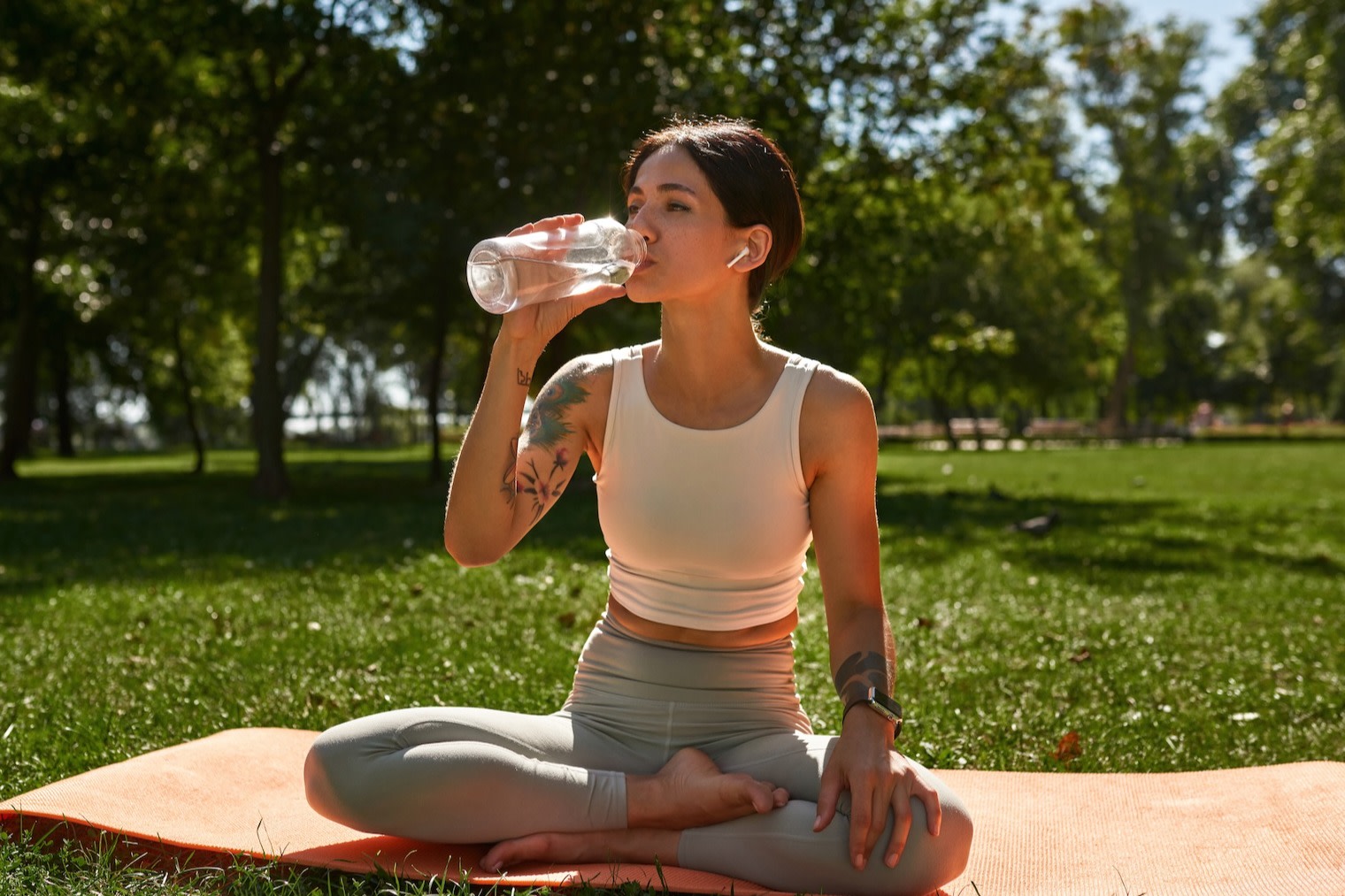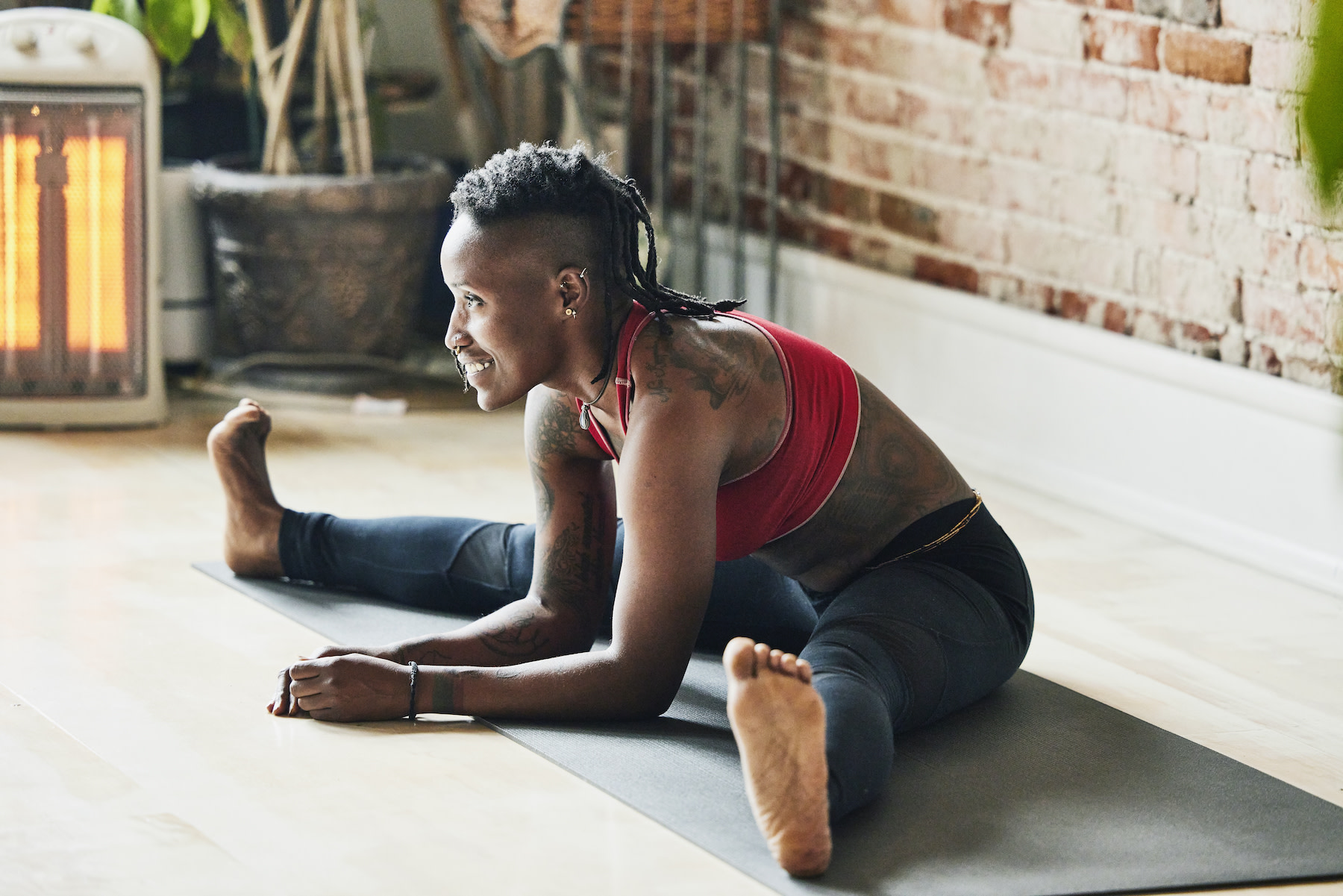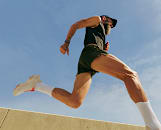
LanaStock / iStock / Getty Images Plus via Getty Images
Can You Work Out After Getting a Tattoo? What a Dermatologist and a Tattoo Artist Recommend
Keep your skin and your new ink safe with these after-care exercise tips.
By Michele Ross•
Can You Work Out After Getting a Tattoo?
When Can You Work Out After Getting a Tattoo?
Why Should You Wait to Exercise After Getting a Tattoo?
What Exercises May Be Safe After Getting a New Tattoo?
What Workouts Should You Definitely Avoid with a New Tattoo?
How to Keep Your New Tattoo Safe During Exercise
The Takeaway
Just got a new tattoo or planning to get some ink done soon? Aside from making the commitment, finding an artist, and setting a date, you’ll also need to learn how to take care of your new tattoo and make a few adjustments as it heals. For instance, there’s a good chance you’ll need to hold off on exercise—or, at the very least, opt for tattoo-safe, low-intensity forms of movement.
Discover more ways to reach your goals with Peloton
We spoke with a dermatologist and a tattoo artist to determine whether or not you can work out after getting a tattoo, plus how long you can anticipate waiting before resuming certain exercises. Check out their expert insights and tips below.
Can You Work Out After Getting a Tattoo?
Whether or not you should work out after getting a tattoo depends on a few unique factors, but it’s better to err on the side of caution and stay away from exercise for at least two days. (A tattoo is a lifetime commitment, after all.)
“It all depends on the individual who gets tattooed, the type of work that is done, and the technique of the artist,” says Chaim Machlev, a tattoo artist and designer behind Dots to Lines. He notes that different types of tattoos will create more damage on the skin, and thus, lengthen the time it takes to heal—and how long you should wait before breaking a sweat.
“Generally speaking, lines and dots heal faster than fully covered shaded or colored areas,” he offers as an example. And it makes sense that an intricate, colorful design on your entire back requires a longer healing period than minor work.
When Can You Work Out After Getting a Tattoo?
Some people will only need to wait as little as 48 hours to work out after getting a tattoo. But folks who get bigger, complicated designs or who get inked in certain areas that bend and stretch might need to hold off on certain types of exercise for a few weeks.
If you’re getting small and/or fine tattoos such as lines and dots, your waiting time before resuming workouts will be on the shorter end of the spectrum “A good rule of thumb is to wait at least 48 hours after getting a tattoo before engaging in any physical activity,” shares board-certified, cosmetic dermatologist Michele Green, MD, who offers laser tattoo removal at her practice.
Again, bigger and more involved designs will have lengthier waiting periods and more stipulations. The same goes if you get a tattoo in a place that’s more susceptible to contracting, stretching, or elongating—especially during workouts—such as your knuckles, elbows, stomach, and knees. “We normally recommend avoiding workouts for a few weeks till we reach a full healing of the tattoo to help it settle down nicely and easily,” Machlev adds.
Still, there are some workarounds to these general rules—so long as they’re cleared by your tattoo artist and/or dermatologist, and done within reason. (More on this in just a bit.)

Thomas Barwick / DigitalVision via Getty Images
Why Should You Wait to Exercise After Getting a Tattoo?
You should pause your regular workouts after getting a tattoo in order to help your skin heal safely and protect your new ink. “The process of getting a tattoo involves using small needles to create puncture wounds in the skin to deposit ink into,” Dr. Green explains. “As such, getting a tattoo creates an open wound on the skin that is susceptible to infection.”
According to Dr. Green, exercising too soon after getting inked can heighten the risk of infection, irritation, and premature tattoo fading because:
Bacteria on unclean gym equipment (like mats, benches, and props) can enter the wound and cause bacterial infections
Stretching and extending your body can rub or pull on the skin, delaying the healing process
Excessive sweating while exercising can break down and fade the ink, as well as potentially lead to irritation and infection
“After getting tattooed, the first weeks are crucial for the healing and the recovery of the skin,” Machlev explains. The healing process may eventually entail scabbing and peeling, and new skin will grow. Similar to how you would with a regular wound, you need to give your skin the proper time and care to change and reconstruct. “Intense workouts could interfere with that phase of the healing and create unnecessary complications and damage to the freshly done piece,” he cautions.
On top of following your artist’s recommended post-tattoo treatment protocol, holding off on your workouts is one of the best things you can do to minimize risks, expedite skin recovery, and ensure your ink is exactly how you envisioned it’d look. “We want to do the best we can to help the skin heal and reconstruct the skin cells,” Machlev continues. “Overall, the better one takes care of their tattoo, the better it will heal and age.”
With all that in mind, pausing or rethinking your physical fitness regimen—especially for the first few days to weeks, or as otherwise instructed by your artist and based on your design—is essential.
What Exercises May Be Safe After Getting a New Tattoo?
Clearly, it’s important to avoid intense physical activity shortly after getting a tattoo. But if you’re really itching to move your body, some gentle forms of exercise may be on the table.
“Depending on the size and location of your tattoo, some exercises may be OK to resume immediately after the tattooing process,” Dr. Green says. “Low-intensity resistance training that will not break a sweat can be OK as long as the workout does not involve the tattooed area.”
For example, if you get a tattoo on your lower leg, she says light arm- and core-strengthening workouts that don’t involve leg work or the potential for friction will be pretty safe. Other forms of gentle exercise—such as light cardio or restorative yoga—typically won’t cause problems, Machlev adds.
Whether or not it’s OK to exercise with new ink can also hinge upon how much you sweat. Whether you want to take a walk, use your dumbbells, or do some squats, if you tend to sweat relatively quickly and easily, you’re better off keeping things as tame (and cool) as possible.
What Workouts Should You Definitely Avoid with a New Tattoo?
Some types of workouts—including intense cardio, contact sports, and swimming—can result in extra damage to the fresh tattoo, Machlev warns. When in doubt, remember his general rule of thumb: “We always suggest avoiding intense workouts that involve sweating and rubbing on the fresh tattoo.”
Examples include but aren’t limited to:
Sprinting
Long-distance running
High-contact sports like wrestling, kickboxing, and football
Both experts agree that swimming is an absolute no-go after getting a new tattoo. “Swimming should be avoided for at least two weeks following a new tattoo,” Dr. Green says. “Chemically treated pools can lead to infection and irritation, while natural bodies of water such as lakes and oceans can introduce the wound to harmful bacteria.”
Depending on the nature and placement of your ink, Dr. Green adds that you may need to sub in another workout in place of your yoga flow. “The poses involved can stretch the skin and impair effective healing,” she explains. Of course, there are many types of yoga to choose from, so certain classes and/or poses could be fair game on a case-by-case basis.
Related Articles

Health
Always Drenched In Sweat After a Workout? Here’s Why

Health
Is Your Workout Wreaking Havoc on Your Skin? Here’s How to Treat and Prevent Sweat Pimples

Health
Wondering Why Your Face Gets So Red When You Work Out? Dermatologists Explain What's Going On

Sleep
Wait, Is It Healthy to Sleep Naked? Experts Share the Pros and Cons
How to Keep Your New Tattoo Safe During Exercise
Whether you work out a few days, weeks, or even months after getting your new tattoo—within the bounds of safety and as advised by your dermatologist and/or tattoo artist—you should also take care to protect your new ink during and after exercise.
“Tattoos can take weeks—sometimes months—to fully heal, so it is important to continue to follow protective precautions when resuming physical activity,” Dr. Green says. Her top tips include:
Wear loose clothing around the tattoo to prevent friction and promote healing
Immediately wash your tattoo (with unscented soap or cleanser that’s safe for sensitive skin) with clean hands after working out to clear any sweat, dirt, and bacteria
Follow your tattoo artist’s aftercare protocols for as long as needed
Another pro tip: Keep your new tattoos protected from the sun by exercising indoors and/or wearing loose, protective clothing for at least a few weeks.
The Takeaway
While you can do some forms of gentle exercise after getting a tattoo, the appropriate timelines will vary based on the size, nature, placement, and color of your design. Your propensity for healing, sweating, and similar factors will also inform how long you should wait before resuming certain workouts. A minimum of two days and as much as a few weeks are generally recommended to hold off on more moderate and intense activity. But even yoga and other low-intensity exercises could be risky if they lead to friction, sweating, or stretching the tattoo. Of course, you’ll need to throw these timelines and approved exercises out the window and consult a dermatologist if scratching, infections, or other complications occur.
All things considered, your best bet is to play things safe, and it’s smart to consult your tattoo artist before resuming your typical exercise regimen. Remember: The risk of infecting or messing up the design or color of your tattoo isn’t something to take lightly. Investing the time, effort, and patience for proper recovery is crucial to keep your tattoo and skin in its best shape—even if that requires deviating from your norm or temporarily scaling back on your favorite Peloton App classes. (You’ll be able to get back into the regular swing of things before you know it.)
Last but not least, be sure to enjoy your new piece of art. “It will adapt to your skin and will only look better and better when it is a part of you,” Machlev says.

Peloton App
Access thousands of classes with no equipment needed.
This content is for informational and educational purposes only and does not constitute individualized advice. It is not intended to replace professional medical evaluation, diagnosis, or treatment. Seek the advice of your physician for questions you may have regarding your health or a medical condition. If you are having a medical emergency, call your physician or 911 immediately.
Level up your inbox.
Subscribe for a weekly dose of fitness, plus the latest promos, launches, and events.
By providing your email address, you agree to receive marketing communications from Peloton.
For more about how we use your information, see our Privacy Policy.








